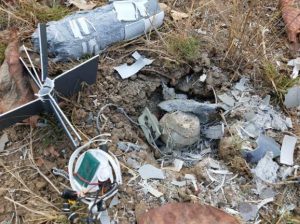On the first month of 2023: Increasing prices of food, basic services

At the start of 2023, the Filipino people were met with simultaneous disasters of skyrocketing prices of basic commodities and social services and relentless rains and floods. Amid these, the Marcos regime offers no solution to the worsening economic crises apart from token measures.
Rising food prices
Onion prices remain at ₱400-₱550 per kilo due to hoarding, manipulation and overpricing by agricultural cartels. The skyrocketing prices are a blow to consumers, even as onion farmers drown in tears and debt due to their losses.
According to the Kilusang Magbubukid ng Pilipinas, onion farmgate prices last year was only at ₱30 per kilo in Nueva Ecija. On the other hand, farmers spend ₱150,000 for every planting cycle. In Occidental Mindoro, farmgate prices plummeted to as low as ₱8-15 per kilo.
Merlita Gallardo, wife of an onion farmer in Pangasinan, recounted how their losses pushed her husband to commit suicide in 2021. Apart from Gallardo, four other onion farmers committed suicide.
Coffee remains bitter as sugar prices remain very high. A kilo of refined sugar is at ₱90 to ₱110 while brown sugar costs ₱80 to ₱96. These are ₱10-₱15 higher compared to the last quarter of 2022.
Like in previous regimes, Marcos has resorted to importation as solution to the food crisis. On January 10, he permitted the importation of 17,100 metric tons of red onions and 3,960 metric tons of white onions. The orders were issued despite upcoming local onion harvest this February.
Meanwhile, the government plans to import up to 450,000 metric tons of sugar this year on the pretext of tempering rising sugar prices.
Egg producers recently disclosed that egg prices will continue to rise this year. Average prices of medium-sized eggs are now at ₱9-₱10, from ₱6.90-₱8.50 in December 2022. However, a number of markets have already been selling regular-sized eggs at ₱10 per piece.
Producers cite as reason for the spread of bird flu which up to now has not been dealt with by Department of Agriculture. According to data by the Bureau of Animal Industry, this pandemic has affected 20 provinces in eight regions. As a result, 1.8 million affected chickens have been culled.
Apart from this, rice prices are set to increase by ₱2 in the coming months. Bread prices are also expected to rise because of increasing prices of eggs and other ingredients.
Gasoline, electricity, water and fare
This January, net gasoline prices already increased by ₱3.1 per liter while kerosene, ₱0.8 per liter. This drove average gasoline price to ₱70 per liter.
The Manila Electric Company (Meralco) announced this month that electricity charges will increase by ₱0.62 per kilowatt-hour (kWh). It will now charge ₱10.9 per kWh this month. This is equivalent to an additional ₱125 charge for Filipino families who regularly consume 200 kWh per month.
Meanwhile, customers of Manila Water will be charged an additional ₱8.04 per cubic meter, while those of Maynilad will shell out ₱3.29 more per cubic meter consumed.
There are also fears of LRT fare increases this year. Minimum fares are set to increase by ₱2.29, with an additional ₱0.21 for every kilometer. The usual ₱13 fare will become ₱15 while longer rides costing ₱15 will become ₱20. Fare increases are imposed every two years as provided for in the contract between the private contractor and the government.
Meanwhile, prices of the liquified petroleum gas (LPG) are also set to increase this February.












